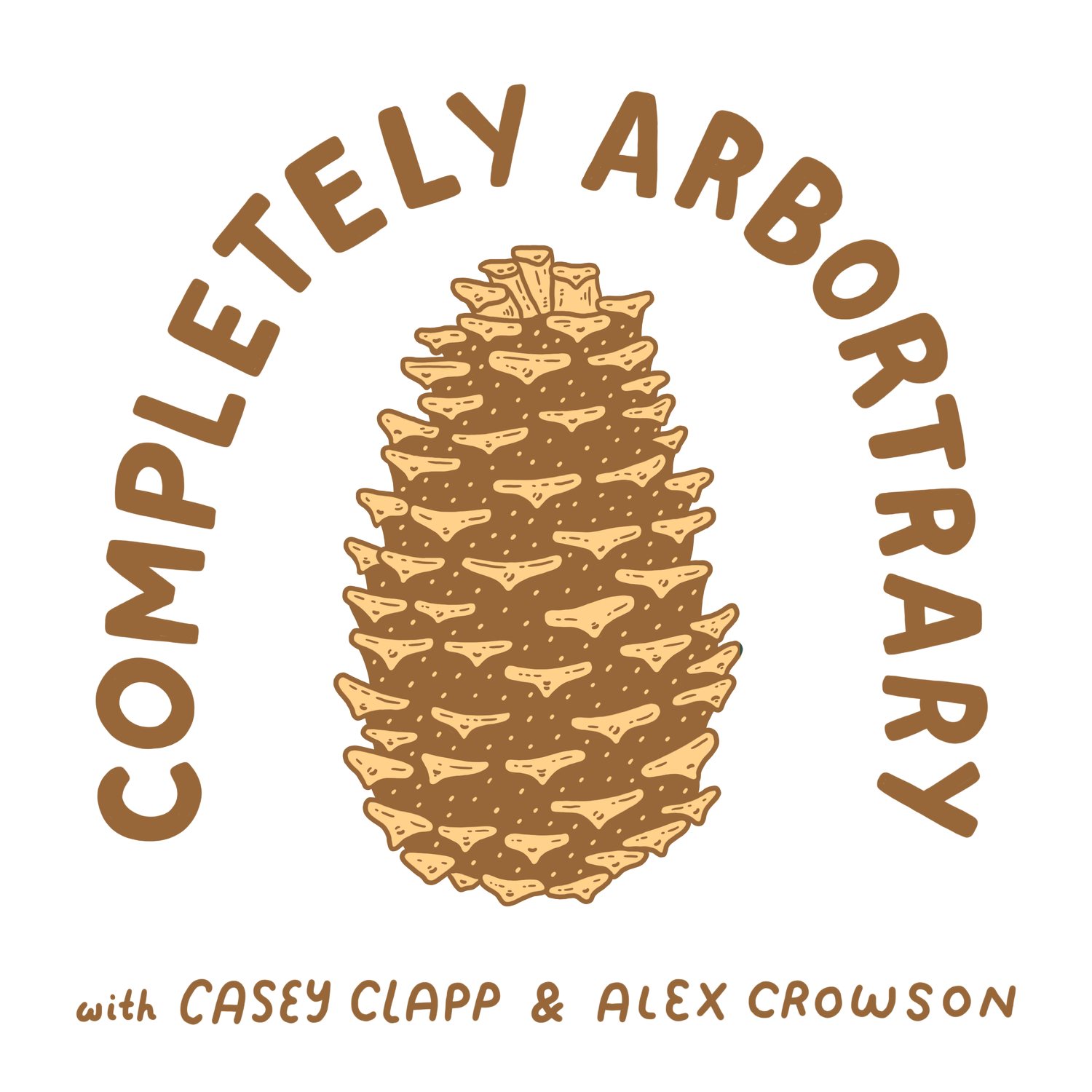THE TREE’S KNEES (BALD CYPRESS)
The devil went down to Georgia, where the baldcypress (Taxodium distichum) lives its days in peace and harmony. This record-breakingly long-lived tree found the perfect place to call home--the swamps of the Southeastern United States. There, it sheds stereotypes as well as its needles, growing with grace and beauty against the harsh and often dreary landscapes in which it resides. This deciduous conifer is without a doubt and from top to bottom a unique species. This episode we play a new game all about puns: A Little Bit Puntree, A Little Bit Log and Soil.
Baldcypress
(Taxodium distichum)
Every now and then you run into a tree that just seems to break all the rules. A tree that shirks convention and seems to revel in its decidedly counter-cultural lifestyle. A tree that doesn’t conform to the norms and is unapologetic in its sureness of place.Every now and then, you find one of these trees. Rarely, however, do you find one that does all this and yet also manages to out-perform its peers in nearly all categories. The baldcypress (Taxodium distichum) is one such tree.
Baldcypress, sensu stricto, is a swamp dweller of southeastern North America. Unlike other lowland trees, baldcypress doesn’t just enjoy having its feet wet, merely withstanding a spell of inundation here and there. Baldcypress can grow completely submerged or in frequently flooded areas for months at a time. And to be clear, this isn’t a simple act of toleration (like some trees I know…). Baldcypress positively thrives with its roots completely submerged, and indeed it has adapted to these habitats with a unique suite of characteristics that make it nearly unstoppable.
To avoid premature decay, baldcypress has wood that is resistant to insect and fungal incursion, a very good trait indeed while living life in a humid swamp. With deciduous needles, a rarity among conifers, it can focus its energy on reproduction, growth, and defense in lieu of putting that energy towards robust leaves. And to avoid drowning with such watery soils, baldcypress has mastered a feat few others have: breathing under water.
Ok, maybe that was a bit of an embellishment, but strictly speaking, it’s not wrong. Trees need oxygen to respire and use their stored energy just like the rest of us, and the roots absorb much of this from pore spaces in soils. However, when those soil spaces get filled with water (like, say, in a swamp), the oxygen is forced out and plants either find another way to get oxygen to their roots, wait it out until drier times, or they perish. The baldcypress wasn’t about to perish and had no intentions of waiting around for the swamps to drain. The baldcypress opted instead to innovate, and it grew knees.
What we call ‘cypress knees’ are unique structures that grow up from their roots called pneumatophores. Pneumatophores assist in gas exchange when conditions dictate that the normal methods (like exchange through pores in the leaves called stomata and or pores in the bark called lenticels) just don’t cut it. Knees emerge vertically from lateral roots underground (and often under water) and grow upwards until they are just above the high-water line. These structures allow the baldcypress to thrive in oxygen-deprived environments where few other trees are able to make a living.
Now, don’t let this fool you into thinking that baldcypress is the only tree to take such extreme measures, or that it’s the only tree to eke out a life in the local swamp. Other trees have aerial or prop root that help them dominate in their respective habitats (check out the banyan or the red mangrove for exceptional examples), and plenty of riparian trees are well adapted to survival in watery locales. But what sets baldcypress apart is that it has used its unique set of skills to grow taller and wider and for a whole lot longer than almost all other trees. Full stop.
Only four other trees (all conifers) grow to be older than the oldest baldcypress documented so far at 2,624 years. Sensu lato, the baldcypress would include also the largest individual trees in the world in terms of girth, the ahuehuete or Montezuma-cypress with the exceptional Tule Cypress measuring a whopping 36.2 meters. With specimens growing to over 130 feet, it’s among the tallest trees in the swamp, too.
Without a doubt, the baldcypress is one of those trees you stumble upon and wonder just how it does it. It’s a tree that proves that for every rule, there’s an exception. More than that, though, the baldcypress proves that sometimes it’s the exception that makes you ask if the rules are even real in the first place.
Completely Arbortrary is produced and hosted by Casey Clapp and Alex Crowson
Support the pod and become a Treemium Member
Follow along on Instagram
Find Arbortrary merch on our store
Cover art by Jillian Barthold
Music by Aves and The Mini-Vandals
Episode cover photo by Chesapeake Bay Program
Additional Reading:
The Bald-Cypress (Taxodium distichum)
Some Quick Facts
The Oldest Conifers
An Under Water Forest
The Ancient Bald Cypress Consortium

